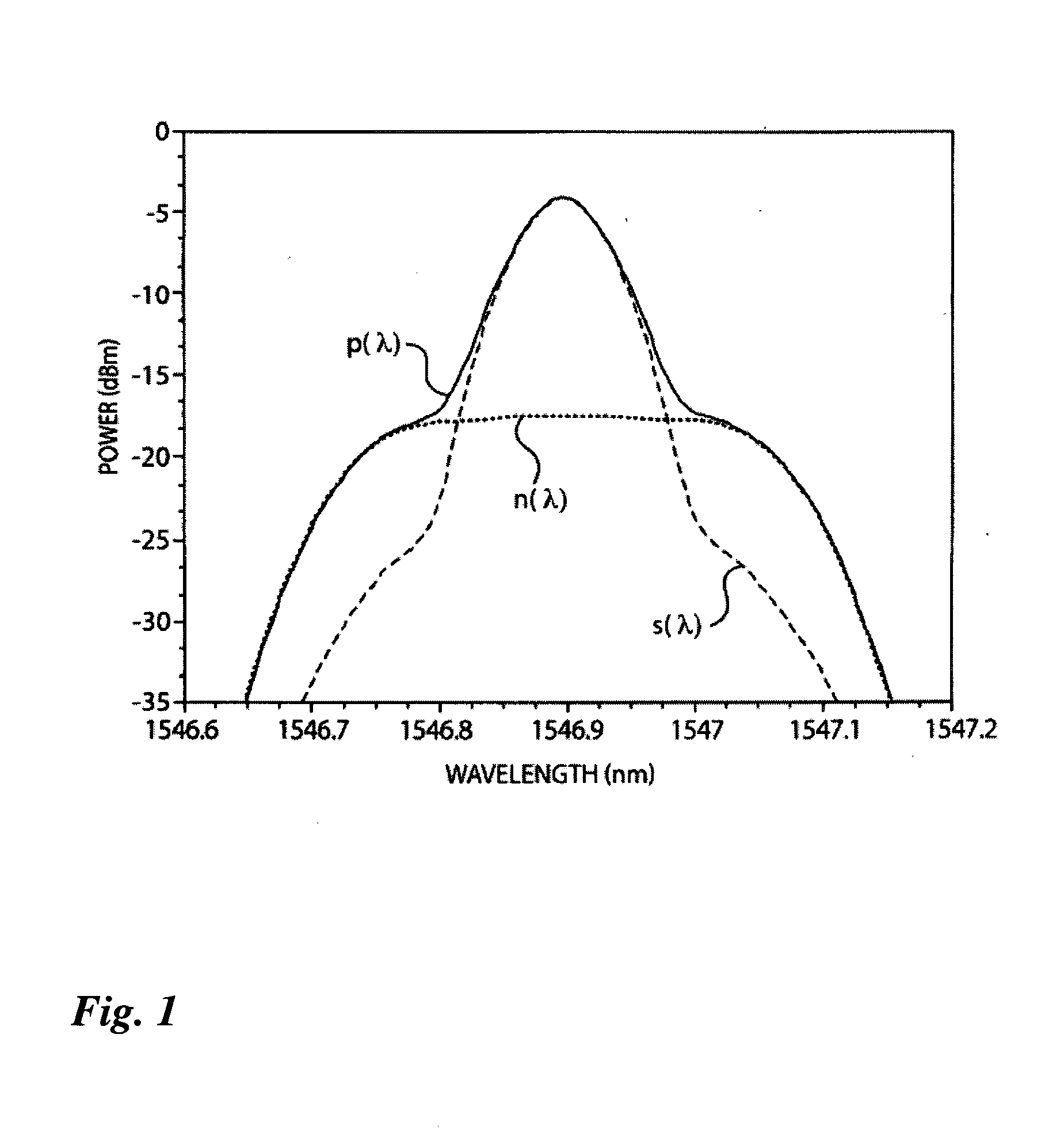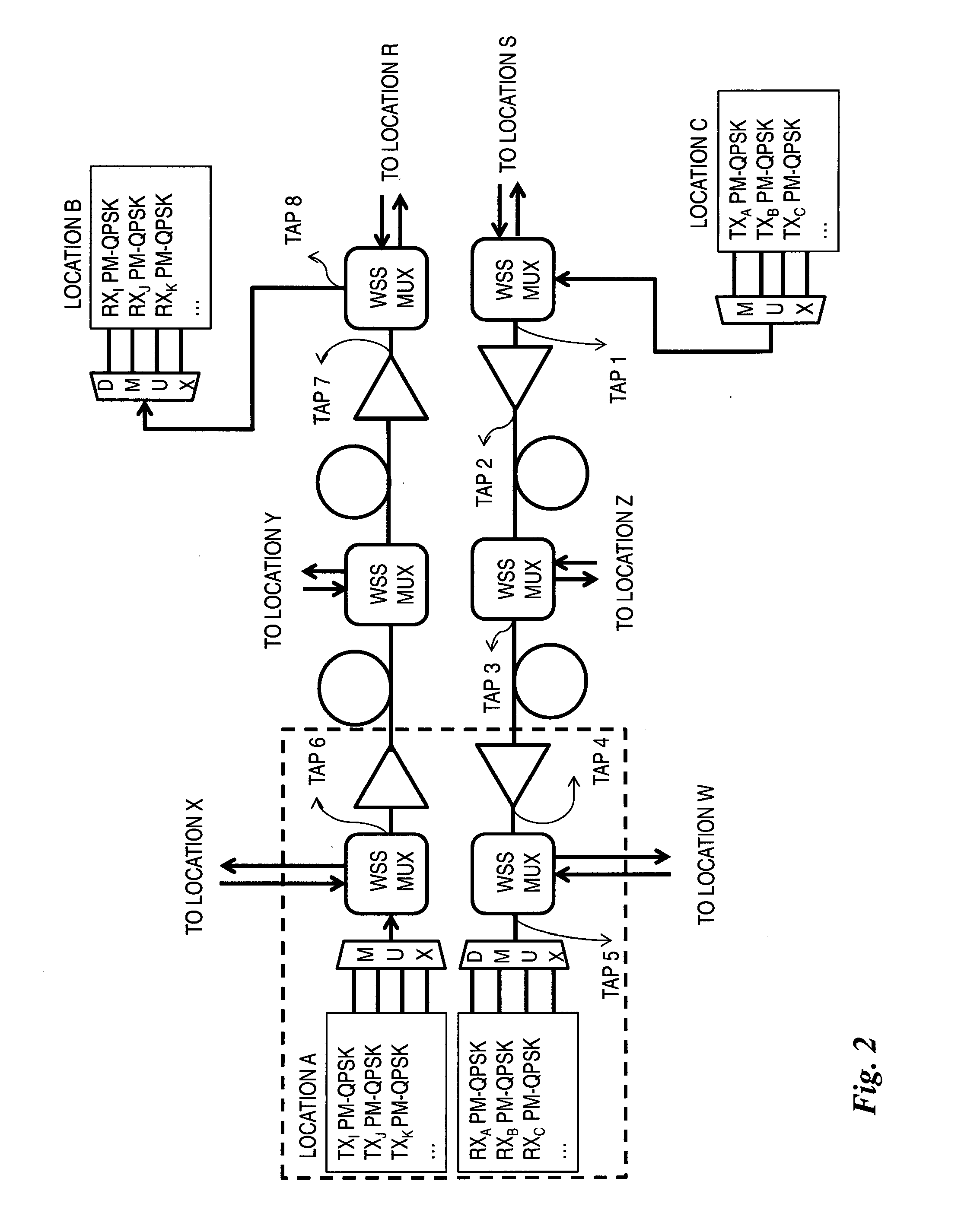Signal deformation measurement on polarization-multiplexed signals
a technology of polarization-multiplexed optical signals and signal deformation, which is applied in the direction of electrical equipment, transmission monitoring, electromagnetic transmission, etc., can solve the problems that the above-mentioned in-band osnr measurement methods cannot be used to reliably provide osnr measurement, requires certain assumptions, and limits the use of this techniqu
- Summary
- Abstract
- Description
- Claims
- Application Information
AI Technical Summary
Benefits of technology
Problems solved by technology
Method used
Image
Examples
first embodiment
[0078]FIG. 5 illustrates the method 400 described hereinabove for determining a quality parameter characterizing a polarization-multiplexed SUT. The method 500 of FIG. 5 gives one specific implementation algorithm of how the test trace PSUT(λ) and the reference trace Sref(λ) may be processed to estimate the spectral deformation k(λ) of the signal contribution of the SUT as compared to the reference trace. The method 500 of FIG. 5 is illustrated here for the specific case of 100G PM-QPSK signals.
[0079]The method 500 of FIG. 5 is based on the following approach which uses the ratio Rdev(λ) of the derivative of the test optical spectrum trace as a function of wavelength with respect to the derivative of the reference optical spectrum trace as a function of wavelength. Knowing that
Rdev(λ)=PSUT(λ) / λSref(λ) / λ=k(λ)+k(λ)λ·Sref(λ)Sref(λ) / λ(5.1)
[0080]By deriving Rdev(λ) and neglecting the term including the second derivative of k(λ), we obtain:
Rdev(λ)λ≈k(λ)λ·(2-2Sref(λ)2λ·Sref(λ)Sref(λ) / λ)(5....
second embodiment
[0110]FIG. 6 illustrates the method 400 described hereinabove for determining a quality parameter characterizing a polarization-multiplexed SUT. The method 600 of FIG. 6 gives another specific implementation algorithm for processing the test trace PSUT(λ) and the reference trace Sref(λ) in order to estimate the spectral deformation k(λ) of the signal contribution of the SUT, via a comparison with the reference trace and / or the ASE-only noise comprised in the SUT.
[0111]In most cases, the spectral deformation of the SUT as it propagates along an optical communication link will be manifest as a spectral broadening of the optical signal. The specific method 600 of FIG. 6 is based on this premise.
[0112]The method 600 is also based on the use of the ratio Rdev(λ) (equation (5.1)). However, instead of calculating the ASE-noise contribution NASE from a first estimation ke1(λ) of the signal deformation function, method 600 first evaluates an extended noise contribution NE(λ), as defined here...
PUM
 Login to View More
Login to View More Abstract
Description
Claims
Application Information
 Login to View More
Login to View More - R&D
- Intellectual Property
- Life Sciences
- Materials
- Tech Scout
- Unparalleled Data Quality
- Higher Quality Content
- 60% Fewer Hallucinations
Browse by: Latest US Patents, China's latest patents, Technical Efficacy Thesaurus, Application Domain, Technology Topic, Popular Technical Reports.
© 2025 PatSnap. All rights reserved.Legal|Privacy policy|Modern Slavery Act Transparency Statement|Sitemap|About US| Contact US: help@patsnap.com



